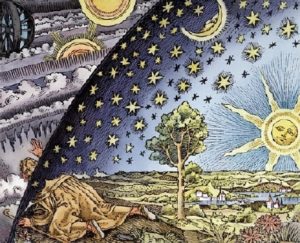Η σύγχρονες έρευνες για την αποκωδικοποίηση του γονιδιώματος φέρνουν με μεγάλη ταχύτητα νέες χρήσεις, προϊόντα και ιδέες σχετικά με τις εφαρμογές των μελετών για το DNA στη διατροφή και την υγεία, επιδρώντας παράλληλα και διαμορφώνοντας τις αξίες και τις στάσεις μας. Τόσο στη χώρα μας όσο και σε πολλές άλλες χώρες του κόσμου ειδικές επιτροπές βιοηθικής αποτελούμενους από ειδικούς επιστήμονες βιολόγους και γενετιστές, από νομικούς και πολιτικούς καθώς και από εκφραστές των διαφόρων θρησκευτικών συστημάτων συζητούν προκειμένου να εισηγηθούν τους νέους κανόνες ή νόμους που θα πρέπει να θεσπισθούν για τις εφαρμογές της γενετικής. Παράλληλα οι κοινωνιολογικές προεκτάσεις των νέων κα σε εξέλιξη βιολογικών θεωριών μας φέρουν αντιμέτωπους με έναν αναδυόμενο ρατσισμό.
Η ταινία «Gattaca», αν και ανήκει στις ταινίες επιστημονικής φαντασίας, θίγει πολλές διαφορετικές εκδοχές αυτού του αναδυόμενου ρατσισμού με αφετηρία τη γονιδιακή μας κληρονομιά.
Θρίλερ, με μια θεματική ανατριχιαστικά επίκαιρη στην εποχή της κλωνοποίησης και του γενετικού ελέγχου. Απέσπασε υποψηφιότητα για Όσκαρ Σκηνικών, ενώ παράλληλα ενθουσίασε κοινό και κριτικούς. Ο Βίνσεντ είναι ένας από τους τελευταίους ανθρώπους που γεννήθηκε με φυσικό τρόπο, σε έναν κόσμο αποστειρωμένο και εργαστηριακά ελεγμένο, ώστε να γεννιούνται παιδιά χωρίς γενετικά ελαττώματα. Προκειμένου να υλοποιήσει το όνειρό του: να γίνει μέλος μιας διαστημικής αποστολής, παρά το βεβαρημένο ιατρικό του μητρώο, χρειάζεται να υιοθετήσει την ταυτότητα ενός γενετικά `τέλειου` αθλητή, επιλογή που θα θέσει σε κίνδυνο, ακόμη και τη ζωή του…
Με αφορμή την ταινία γράψτε μας τα σχόλιά σας ή/και αναζητήστε σχετικό υλικό στο διαδίκτυο σχετικά με τις ακόλουθες ερωτήσεις:
Ποιες μορφές ρατσισμού εντοπίζετε στην ταινία;
Στην καθημερινότητά σας έχετε αντιμετωπίσει ανάλογες στάσεις που ενισχύονται ή ενθαρρύνονται από τον τρόπο που παρουσιάζονται από τα ΜΜΕ τα αποτελέσματα των σύγχρονων ερευνών για το DNA;
Τι γνωρίζετε για την ιστορία των ερευνών για το DNA; Πότε ξεκίνησαν, ποιες ήταν οι πρώτες εφαρμογές τους;
Συμπληρωματικό υλικό
DNA was once considered a mystery of science. One of the people that helped to discover and solve the mysteries of DNA was Rosalind Franklin. Even though she had to struggle against a great deal of male ignorance in the scientific community, she still made an impact on the world of science.
Born on July 25, 1920, Rosalind attended St. Paul Girl’s School in London. Franklin and her four other siblings received an advantaged childhood because their father was a banker. At an early age she showed an interest in science-like astronomy, physics and science. She also preferred building things than playing with a doll. (Stille, 74) Because of the time period in which she lived, Rosalind was considered odd because of her interests. Her interest in science continued until she reached college.
Rosalind applied and was accepted to Cambridge University in 1938. Her father was against her going to a university because he did not think that it was proper. She went to the university despite her father’s opinion. She graduated in 1941.
After graduating from Cambridge she participated in all sorts of research. During World War Two, Rosalind worked for the British government.
But in spite of all this she was still able to make her mark on the scientific community. Here is where she does the research that makes her most note able. (Stille, 77)
Rosalind Franklin struggled throughout her life because of a male dominated society. He thought that she should be proper and do volunteer work. She used the techniques that she learned in Paris to research the structure of DNA. Four years after her death in 1958, Watson, Crick, and Wilkins shared the Nobel Prize for biochemistry. She became closer to Crick and they became friends but she never liked Watson. They all get credit for it, except for Rosalind. They never let her eat in the dining room of the college. (Newton, 52) She went to Paris, France from 1947 to 1950 to study the practice of x-ray crystallography. She was rather too set on succeeding by herself and rather to stubborn to accept advice from others when it ran to counter her own ideas” (Newton, 52-53).
When they used her photograph to create a model of DNA they got most of the credit for the discovery. They got along even worse after Wilkins took her photograph, which proved DNA is a double helix, to his close friend James Watson. He thought Rosalind was his research assistant and she believed that she would be doing the research by herself. She was made to eat in the student’s hall. As soon as they met, they immediately formed negative opinions of one another.
Deoxyribonucleic Acid, DNA for short, is a molecule that has been one of the biggest mysteries of modern science. What is its structure? Does it contain the genetic code and if it does how is it used? These are some of the questions that puzzled scientist in the early fifties. Many scientists tried to figure out DNA but only four came close to answering the questions. Those scientists were James Watson, Francis Crick, Maurice Wilkins, and Rosalind Franklin.
Rosalind Franklin had university degrees in chemistry, she got her undergraduate and graduate degrees from Cambridge University. During WW2, Franklin had made contributions to understanding the structure of graphite and other carbon compounds. After the war she joined the Laboratoire Centrale des Services Chimiques de l’Etat in Paris, where she was introduced to the technique of X-ray crystallography and became a respected scientist in this field. In 1951 she returned to England to King’s College, London, where she upgraded the X-ray crystallography laboratory there to work with DNA.
In 1951, 23 year old James Watson, an American, got in to Cavendish Laboratory in Cambridge. Ironically Watson thought it was a good thing because he thought he would get all the glory when they succeed.
Maurice Wilkins was born in New Zealand but studied to be a physicist at St. They thought it would be possible to figure out DNA’s structure with the evidence at King’s College.
Watson and Crick used a scientist research on paper chromatography to determine the ratio of nitrogen bases and Watson had graduated from the University of Chicago at 19 and got his doctorate at 22. Watson had two degrees in zoology: a bachelor’s degree from the University of Chicago in zoology and a doctorate from the University of Indiana. Crick had changed from physics into chemistry and biology, fascinated by the line “between the living and the nonliving.
In 1962 James Watson, Francis Crick, and Maurice Wilkins received the Nobel Prize for their finding the structure in 1953 of the structure DNA. It was Wilkins’ idea to study DNA by using X-ray crystallographic, which he had already begun to use when Rosalind Franklin became a research associate for John Randall.
Watson and Crick have the upper hand, however, since they have the work of Rosalind Franklin and Maurice Wilkins.
This discovery would not have been possible without the use of X-ray analysis, nor would i have been able to understand how they used X-ray analysis if i had not studied it in the c1403 book, and heard about X-rays in class lecture. Without the images developed through X-ray crystallography, Watson and Crick would never have been able to unravel the mystery of the structure of DNA. Each scientist knows that there are phosphates, sugars, and bases involved and there are four types of nucleotides. Watson and Crick owe much of their acclaim to Rosalind Franklin and her X-ray techniques. Wilhelm Rontgen discovered X-rays in 1895, and then seventeen years later Max von Laue realized that aiming these rays at a salt crystal could create a spotted image on a photographic plate. Each scientist knows that there are phosphates, sugars, and bases involved and there are four types of nucleotides. The scientists were using these short wavelength rays, with high penetration levels to create images of the extremely small crystalline DNA structures. Once the team could tell the structure was a double helix, it was easy to put together the rest of the puzzle since they already had the basic three dimensional blue print of their project. Watson and Crick used Watson’s earlier notion of how the base pairs bonded, along with these visual images generated by Rosalind to realize that the double helix is a sort of backbone for the DNA molecule, and the bonded bases sit neatly within this helical ribcage. Toward the end of the story, the book turns into a competitive race to find the true structure of the mysterious molecule. Watson and Crick owe much of their acclaim to Rosalind Franklin and her X-ray techniques. The scientists also suspect that the molecule is in some sort of helix formation. Franklin and Wilkins used this process of “X-ray crystallography” to provide Watson’s team with two dimensional pictures of the DNA.
Η συμβολή της φυσικού Rosalind Franklin
Alternative ending Gattaca






